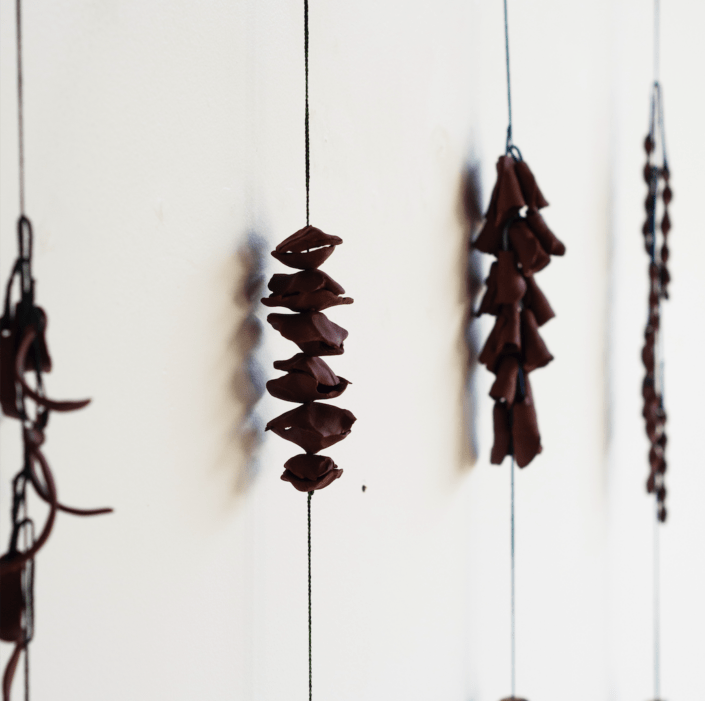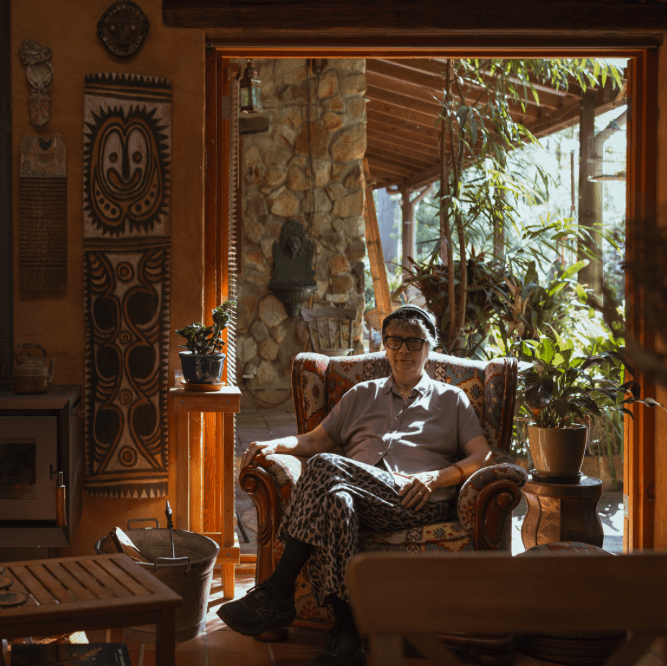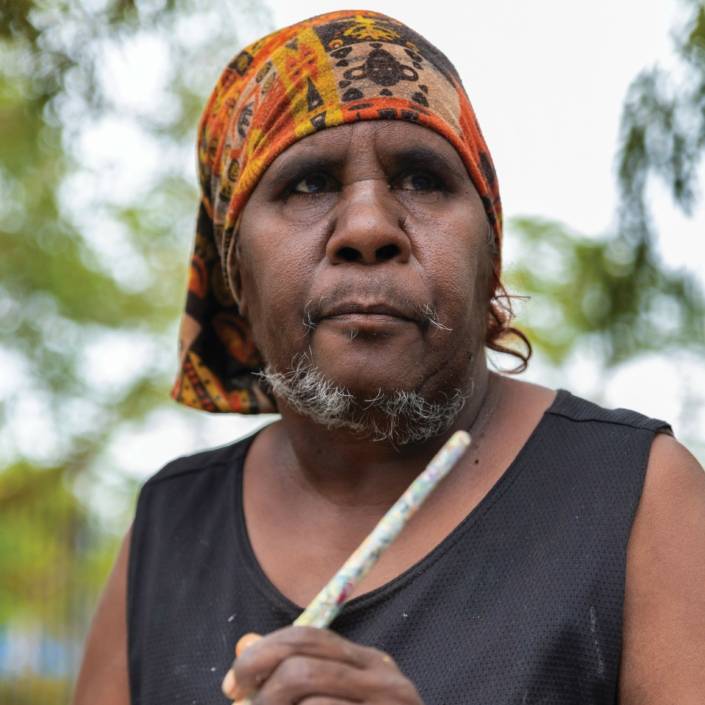Geoff Kleem: Getting Lost and Found in the Forest
During his two-decade long career, Australian artist Geoff Kleem has had an on-going interest in labour, landscape and the dynamic relationship between audience and artwork.
Words: Tracey Clement
Photography: Maja Baska
There’s an old saying, ‘You can’t see the forest for the trees.’ At first this quaint quip seems both blindingly obvious, tautological even, and infuriatingly obscure. But really it’s a straight forward warning: if you get distracted by the detail you may lose sight of the bigger picture. And this seems to be the risk inherent in examining the work of Sydney-based artist Geoff Kleem. In a career spanning more than three decades Kleem has produced photographs, installations and objects of such heterogeneous variety that the danger of getting lost in their intriguing detail, of missing the forest for the trees, seems very great indeed.
However, somewhat ironically, by looking closely at the detail of his artwork The Good Forest, 2013, the bigger picture starts to become clear. This work consists of a mural-scale stereo anaglyph image of a pine forest that appears (almost) three-dimensional when viewed through red/blue 3D glasses, a real outdoor garden lamp, and a fake rock placed on the chequerboard lino floor of a small gallery.
In discussing The Good Forest Kleem explains that he was thinking about the active relationship between viewer and artwork, as well as the ambiguous relationship between an image as a representation of an object and as an object itself. He wanted to interrogate these complex relationships through creating a photograph that came as close as possible to approximating the physical sensation, for the viewer, of being at the location where the photo was taken. And Kleem thinks through art. “So in order to figure that out,” he says, “I had to make it.”
It was an ambitious idea. In fact, ideas are at the heart of all of Kleem’s work. “I wouldn’t really call myself a conceptualist,” he says. “But I really do have a conceptual relationship to what I’m doing. My artworks are driven by ideas.” And the fact that it fails, that you don’t quite feel like you are in Kleem’s pine forest, is what makes the piece work. “If it was completely convincing I wouldn’t actually see it as successful,” he says. “Because it wouldn’t engage; it would become an illusion or a simulation.” For Kleem, this gap between fact and fiction is where the action is, it’s a liminal space that leaves room for interpretation. “I want the viewer to be able to respond; to find meaning within the work that is their own.”
Looking at Kleem’s The Good Forest it is clear that this installation is, metaphorically speaking, both the forest and the trees. Close reading of the details of this artwork reveals concerns that have been played out across Kleem’s broader practice. His exploration of the fruitful tension between object and image can also be seen, for example, in his Untitled, 2002, a photographic image of a seascape interrupted by two white rectilinear voids which reveal, as Kleem puts it “the photographic paper; the medium itself.”
The artist’s appreciation for the potential of the absurd or the dysfunctional and his interest in the relationship between the artwork and the viewer, so evident in The Good Forest, was manifested much earlier in sculptures he has been making since the mid 1990s. These mimic utilitarian furniture units, but with a twist, as seen in the conjoined filing cabinet/chair/shelf/air compressor object from his most recent solo show, Models, at William Wright Artists Projects, Sydney. Having no discernable function these “purposefully-purposeless” objects invite viewers to instil them with their own meanings.
Kleem describes the pine forest in The Good Forest as “a set I could play with” and a similarly theatrical approach can also be seen in his stunning early photographic works from 1990 in which he took over an abandoned factory and painted the entire interior white. “There was something performative about it,” he recalls. “It was a big production. And it was great, it was a job. I was working in this place where labour took place. I was working in the factory.”
This interest in the conceptual resonance of labour is another thread that runs, subtly, through much of Kleem’s work. As is his interest in generic landscapes, such as the pine forest, or the almost non-descript desert terrain of Death Valley which he photographed with forensic precision for his DV series of images from 2013.
These last two interests, in labour and in non-specific landscapes, can perhaps be traced back to Kleem’s early years. As a boy from the bush (Cowra in Central West NSW) Kleem feels that the mythologised link between the Australian bush and national identity is inaccurate, and it’s not something he wants to get bogged down in. “I don’t want to lose my work in that debate,” he says.
Kleem’s family moved to Wollongong when he was in his early teens, a city then dominated by the steel works where his father worked as a mechanic. Kleem attended a Catholic all boy’s school that didn’t offer art, but that didn’t stop him getting art lessons. The determined teen managed to negotiate attending art classes at the local girl’s school instead. “So I was like this kind of heretic, he says. “I’d march off up the road and go to the Church of England girl’s school.”
His working class parents had given him a private school education in the hope that it would offer him an entre into a white-collar career such as banking. And Kleem did try banking straight after high school, but, as he says, “it was antithetical to everything that I was.” Instead he went to art school “which made total sense” and from there forged a career that has included numerous international residencies (such as PS1, New York and the Chinati Foundation, Marfa, Texas) and more than two dozen solo exhibitions. Kleem’s work has been collected by major public institutions all over Australia including the MCA, the NGA, and state galleries in Vic, Qld, SA and NSW. And the AGNSW has commissioned a new work for 2017.
In 2013, curator and critic Doug Hall nominated Kleem’s sculptural installation Aegis, in which industrial scaffolding units plated in 24k gold seem to hold up architectural space, as the best artwork of the year. Like The Good Forest, this work neatly encapsulates many of Kleem’s concerns: it is purposeful and purposeless, it demands interaction and invites interpretation. Aegis is also a beautiful, clever and witty nod to his roots. Throughout his career, Geoff Kleem has maintained a healthy respect for good old fashioned work.
This article was originally published in Art Collector issue 77, JUL–SEPT 2016.









